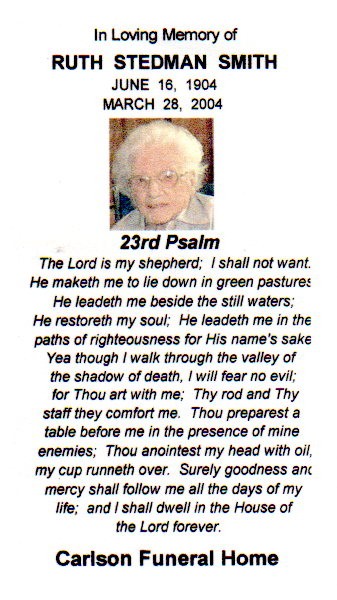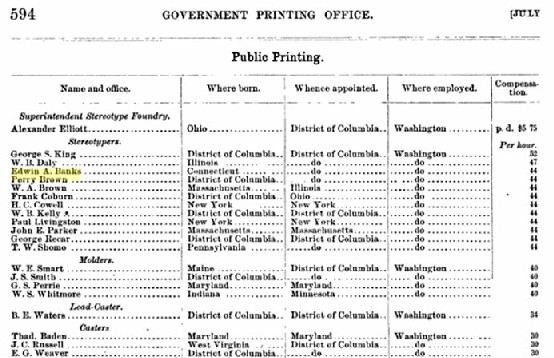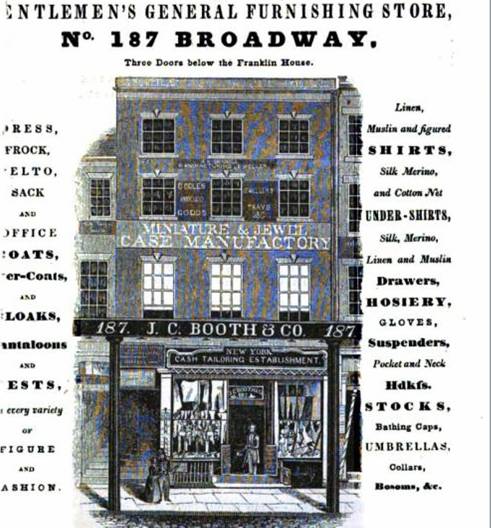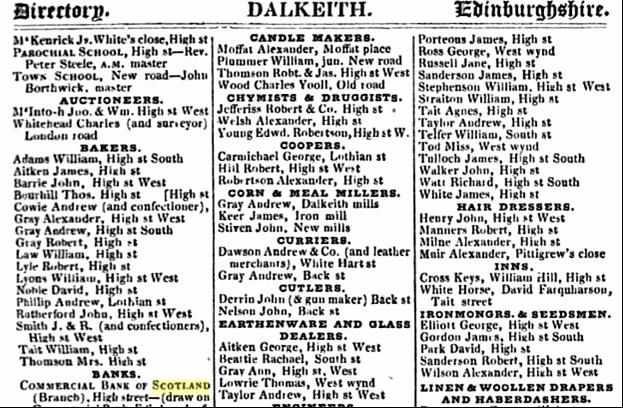My great aunt Ruth (Laurie) (Stedman) Smith lived to be 99 years old. Funeral cards can be a great resource. I’ve even seen photos on some funeral cards as early as 1923.


Most of us who’ve been doing a bit of genealogy over time have all come to know and love the Google search engine. But how many of you have utilized Google’s vast array of books they have scanned and made available online for free. This posting is about how to go about maximizing your searches to find your ancestors on Google Books. The well known web search site has digitalized many old historical and new books. Many of these books are fully searchable and viewable for free from the comfort of your own home with an internet connection. Copyright laws may limit books and publications to be fully searchable to books published earlier than 1923.
What types of information and books can you find?
For those of you who’d like to follow along, open up a second web browser and go to Google Books. For those of you who saw my post about my civil war ancestors you know a little about my ancestor Edwin A. Banks. Can we find anything about him on Google Books? I typed in Edwin A Banks and found over 1,000,000 hits. That’s quite a bit too many for me to weed through…
Is there any way for me to restructure my query to get a few less hits? Well I know that in most records about my Edwin his middle initial is present as well. How about if I put Edwin A Banks in quotation marks (“Edwin A Banks”). Well that narrowed the results down. At the time I was preparing this post, there were 12 hits which came back from the query. Few enough for anyone to go through, even me. Of the twelve hits, three were about my Edwin A Banks. One was about his time in the civil war which I knew about. The other two were about his life in Washington DC.
Edwin lived in Washington DC from 1882 to 1886. I learned this from his Civil War Pension file. Two of the hits told me about his job and work while in Washington DC. I learned he was a sterotyper for the Goverment Printing Office. He earned $0.44 per hour. Skimming through the book, it seems that was a very good pay back then. He work for 2,141 hours in one year and earned $942.04 for that year. Where else but Google Books would I have been able to find this information?

When you put a search criteria in quotation marks it will find that exact string. However, some books may list a person’s surname first followed by a comma and then their first name. I tried searching for “Banks, Edwin A”. At the time I was preparing this posting there were 15 hits and 6 of them were about my Edwin. I learned he was in the Grand Army of the Republic and he spent time in a National Home for Disabled Volunteer Soldiers.
Some of you may have noticed we’ve been using the basic search. There’s a link to get to an advanced search. Here you can search for all books, limited preview and full view, full view or Google e-books. You can search for books published by a particular publisher. There used to be a publishing year you could search by which was really helpful but as I was preparing this post it appears that criteria is no longer available.
Let’s take a look at another of one of my ancestors. Henry L Sanders was a physician working in New York City from about 1838 – 1864. I’m going to try to find a city directory online for him. Type in New York City Directory as the search criteria. That search criteria returned more than 1,000,000 results. However, right there on the fist page was the Dogget’s New York City Directory for 1845. At least when I prepared this post it was. You could enter a search criteria of 1845 New York City Directory which would narrow down the results. Then try each year you think your ancestor might appear in. I found my ancestor Henry Listed in this book and now I found his address. If you scroll through the book, you can get an idea about what some buildings in NYC looked like back in 1845.

There are even directories for other countries. My ancestor John D. Laurie who fought and died during the Civil War came from Scotland. I know his father Thomas. Let’s first look for a Scotland City Directory. Type in Scotland Directory. When I did this, I found Pigot and co.s national commercial directory of Scotland from 1837. This looked promising so I clicked on it. Once you have pulled up the book you want to search, you can type a search term to look for that criteria within that book. I tried typing in Thomas Laurie and found quite a number of hits. It came up with any Thomas or any Laurie. Since most books have the surname listed first I tried “Laurie Thomas”. I got two hits, but they were in the wrong part of Scotland, so most likely not my Thomas. I tried a few variations of Laurie such as Lawrie, Lowrie, Lowry. I found a Thomas Lowrie in the right town in Scotland (Dalkeith) so this could be my Thomas.

Another way to use Google books is to learn about a particular area. One of my ancestors Abel Ford, his son Reuben and grandson Schuyler came from a small town outside of Albany, New York called Rensellaerville. I typed in Rensselaerville and quite a number of hits were found. I looked through a number of these books. Although I didn’t find my Fords in the books that had a full preview capability, I learned a bit about Rensselaerville itself and found some books to check out at a library near me. Some of the books that did not have a full view were available at the Connecticut State Library Genealogy Room.
I found the best way to learn more about what you can find out in Google books is to jump right in. You can also find books on websites other the Google Books, such as Historical Books for Genealogy or Heritage Quest. You may have free access to Heritage Quest with your local library card.
Last year was the 150th anniversary of the beginning of the Civil War. The year saw a number of civil war commemorations and reenactments. I was able to attend a number of these events including one at the Seymour Connecticut Historical Society. It was a very informative and entertaining event. It reminded me of my own civil war ancestors.
Three ancestors of mine served during the civil war. If you are lucky enough to have civil war ancestors of your own, there’s a wealth of records at your disposal to learn more about your ancestors life. One of the first places I found my civil war ancestors was the Civil War Soldiers and Sailors System. If you can find your ancestor listed in this system you can order his service record and if he or his wife earned a pension you can order his pension record as well. You can find a lot of interesting information in both the service records and the pension records.
You could order civil war records from the NARA. The form ‘NATF 86′ is the form you would fill out to order the service records. The service records might provide a description of you ancestors and whether he was admitted to and/or discharged from a hospital. The form ‘NATF 85′ is the form you would fill out to obtain pension or bounty land records. Here you would find out how much pension was awarded, where the individual lived over time and more. These records can be order directly from NARA. However, I would recommend you contact a professional genealogist living in the Washington DC area who knows about these records. For my civil war ancestors I contacted a genealogist in the area who was able to find the records and make copies of both the service records and the pension records of my civil war ancestors. He did it for less than 1/2 the cost than it would be for ordering the records on-line and it took less than 1/2 of the time to get the records mailed to me.
Of my three civil war ancestors, two of them had both a service record and a pension record which could be found. I believe one of my ancestors served in the United States Regular Army. There was not a service record or a pension record which could be found for him. What information can you find in these records, well below is just some of the information I learned from the service records and the pension records about my ancestors.
John Douglas Laurie’s service records were copied onto 15 legal size pieces of paper. From these records I found he was mustered into the 10th Connecticut infantry on September 30, 1861. He was 5 feet 5 inches tall, had a light complexion, blue eyes and a light colored hair. Various company muster rolls show him as present while others list him as absent. The times which lists him as absent there’s an explanation for the reason why such as a furlough. He re-enlisted as a veteran volunteer on January 1st, 1864. He was shot and taken as a prisoner on Darbytown Road in Virginia on October 13, 1864. He was paroled at Virginia on October 17th and admitted to a hospital on October 20th. He died of his wounds on November 3, 1864.
John Douglas Laurie’s wife received a pension. The pension application was copied onto 19 legal size pieces of paper. The application listed the place and date of Nicholas Martin and John’s marriage. It included the birth dates of all of their children. There were various affidavits attesting to the premise that John Laurie and Nicholas were indeed married. No certificate of marriage was in the records, so other means to confirm they were married was taken.
Edwin A. Banks’ service records were copied onto 7 legal size pieces of paper. He was mustered into service to the 2nd Connecticut Heavy Artillery on January 2, 1864 when he was eighteen years old. He was mustered out of service on August 18, 1865. He was 5′ 2″ tall with a light complexion, dark colored eyes and brown hair. Some of the papers in his service record were that of his twin brother Edward A Banks. I also had ordered Edwards’ service records and pension records.
Edwin A. Banks’ pension records were copied onto 16 legal size pieces of paper. The application lists Edwin’s wife Mary A. McKeown and the date and place they were married. It lists all of Edwin and Mary’s children and the dates they were born. These records established where Edwin lived during the time after the civil war.
As you can see from the dates and places he lived, he moved around quite a bit. I never had known about his move to Washington DC and might never have known this without his pension records.
Patrick Fraher is my other civil war ancestor. I have a picture of him in his civil war uniform. I could not find his service records or any pension records. There are two Patrick Frahers listed in the Civil War Soldiers and Sailors System. One served in the 2nd Massachusetts Heavy Artillery. This one died in a prison during the war. The second Patrick Fraher served in the 12th regiment of the US Regular Army. I suspect this is my Patrick Fraher. The place of enlistment is near where he lived during the 1865 New York State Census and near where his daughter was born in 1863. The one thing which troubles me though is that he is pictured with an insignia which indicate an artillery unit. Would the 12th regular army have an artillery unit?
I hope this post will inspire you to learn about your own civil war ancestor. Remember you can contact a professional genealogist in the DC area and get both the service records and any pension records perhaps for less than what it might cost by ordering the records on-line from the NARA.
There are also websites such as Fold3 and Ancestry.com
where you can search for your ancestor in military records including the civil war.